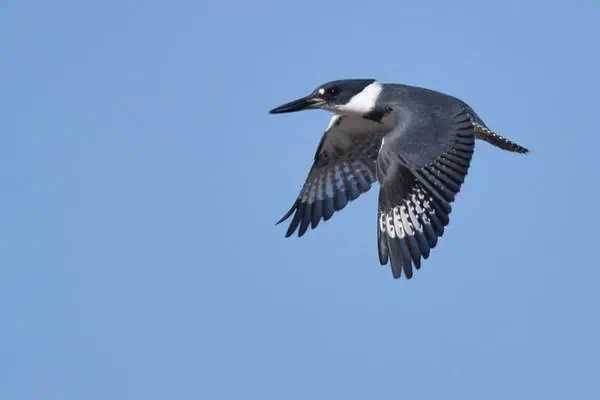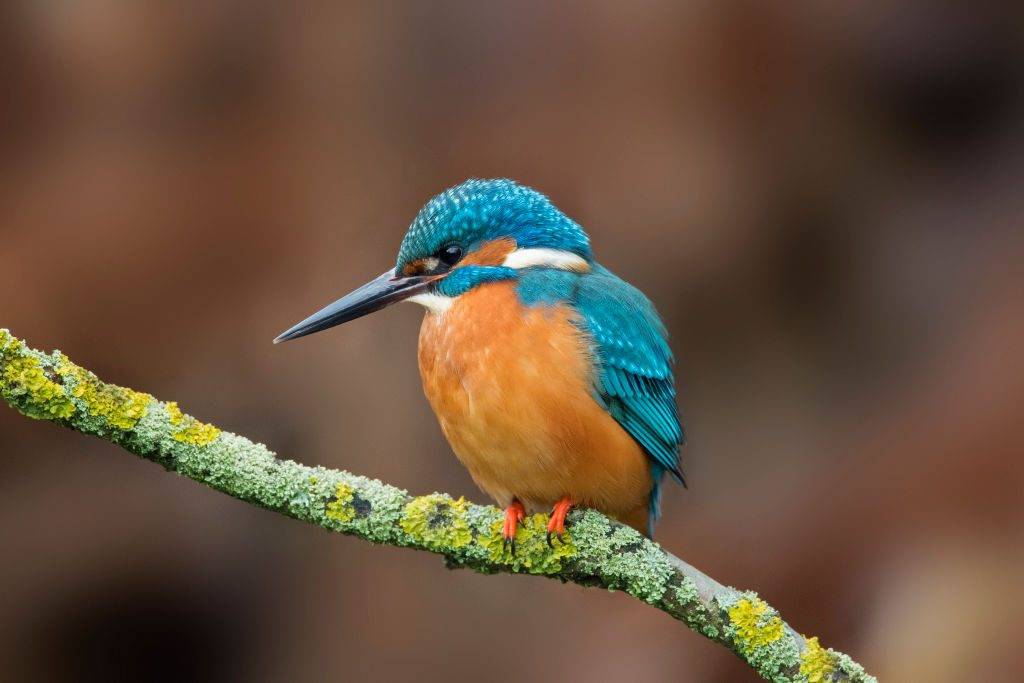

1. There are about 114 species of Kingfishers.

Kingfishers live on every continent but Antarctica. Most species live in the eastern parts of the Old Word, that is, Asia, Africa, and Australia.
Southeast Asia and the Australian islands region have the highest concentration of kingfishers.
2. Kingfishers nest in underground burrows or tree cavities.

It may surprise you to discover that many kingfishers nest underground. Most birds choose to raise young in the safety of the trees, but these water-loving birds developed another way to keep their eggs and chicks safe.
Males and females work together to excavate a burrow from a sandy riverbank.
3. There are three categories of kingfisher: Water, River, and Tree Kingfishers.

The three groups of kingfishers are divided up mainly according to their diet and habitat.
Tree kingfishers are less reliant on water than the other two groups. They prefer to eat small lizards, mammals, insects, and worms. They also nest in trees instead of burrows.
4. Kingfishers live on every continent except Antarctica.

Where there is water, there is probably a kingfisher. These hardy birds inhabit freshwater rivers, streams, and wetlands. Some live in coastal marshes with a mix of saltwater and freshwater.
5. They adapt well to human development.

Kingfishers are shy but they take advantage of human-made canals and waterways to fish, build their nests, and raise young. This type of stream development can worsen or improve conditions for kingfishers.
Channelization is one such negative activity that destroys kingfisher habitat.
6. Males and females look very similar.

When the male and female of a same species look different, they are called sexually dimorphic. Like a male and female Northern Cardinal, which look quite different. Some kingfishers are sexually dimorphic and some are not. It depends on the species of kingfisher.
7. They impale their prey with their bills.

Kingfishers use their sharp bills and strong head and neck muscles to impale their prey. They do this by diving into streams and rivers at high speed while aimed at their prey.
A slippery fish can wriggle out of a beak, but it has no chance of escaping if it is impaled on a kingfisher’s sharp bill.
Once the bird catches its quarry, it eats it whole. Some kingfishers beat the fish against a rock or limb to kill it before swallowing.
8. Kingfishers are most active in the morning and evening.

Dawn and dusk are high-activity times in the animal kingdom. This is especially true for kingfishers, which rely on the movement of fish and invertebrates to hunt and catch their meals.
9. Kingfishers are ambush predators.

Kingfishers perch in wait for the perfect moment to strike. Most fish-eating kingfishers find a branch that hangs out over the water, and sit perfectly still. They zero in on movement under the surface of the below stream or river and wait.
Once they spot an opening, they dive at high speed into the water, spearing their prey on the tip of their beak or grabbing it in a tweezer-like motion. This method of hunting requires strong eyesight, fast flying skills, and patience.
10. They have disproportionately large heads and bills.

Kingfishers’ heads and bills are disproportionate with their bodies. They have well-developed musculature that supports their neck and protects their brain from high-impact dives.
11. They have hydrodynamic beaks.

Their large, sword-shaped beaks evolved to be optimal for their diving hunts. Kingfisher beaks are wedge-shaped, with long pointed tips. This cuts into the water with minimal splash, noise and water disruption so as to not alert the fish that they are coming.
If their beaks were rounder, like a duck, water would be pushed ahead of the beak as they dove, slowing them down and alerting the fish, giving them that extra second to get away.




















代表者: 土屋千冬
郵便番号:114-0001
住所:東京都北区東十条3丁目16番4号
資本金:2,000,000円
設立日:2023年03月07日
